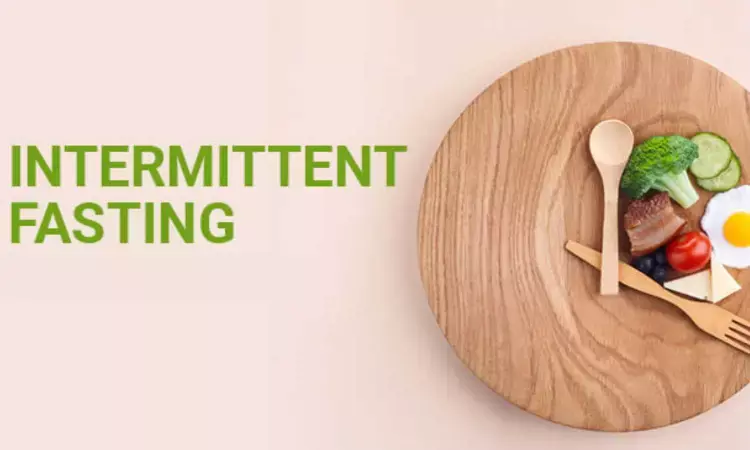- Home
- Medical news & Guidelines
- Anesthesiology
- Cardiology and CTVS
- Critical Care
- Dentistry
- Dermatology
- Diabetes and Endocrinology
- ENT
- Gastroenterology
- Medicine
- Nephrology
- Neurology
- Obstretics-Gynaecology
- Oncology
- Ophthalmology
- Orthopaedics
- Pediatrics-Neonatology
- Psychiatry
- Pulmonology
- Radiology
- Surgery
- Urology
- Laboratory Medicine
- Diet
- Nursing
- Paramedical
- Physiotherapy
- Health news
- Fact Check
- Bone Health Fact Check
- Brain Health Fact Check
- Cancer Related Fact Check
- Child Care Fact Check
- Dental and oral health fact check
- Diabetes and metabolic health fact check
- Diet and Nutrition Fact Check
- Eye and ENT Care Fact Check
- Fitness fact check
- Gut health fact check
- Heart health fact check
- Kidney health fact check
- Medical education fact check
- Men's health fact check
- Respiratory fact check
- Skin and hair care fact check
- Vaccine and Immunization fact check
- Women's health fact check
- AYUSH
- State News
- Andaman and Nicobar Islands
- Andhra Pradesh
- Arunachal Pradesh
- Assam
- Bihar
- Chandigarh
- Chattisgarh
- Dadra and Nagar Haveli
- Daman and Diu
- Delhi
- Goa
- Gujarat
- Haryana
- Himachal Pradesh
- Jammu & Kashmir
- Jharkhand
- Karnataka
- Kerala
- Ladakh
- Lakshadweep
- Madhya Pradesh
- Maharashtra
- Manipur
- Meghalaya
- Mizoram
- Nagaland
- Odisha
- Puducherry
- Punjab
- Rajasthan
- Sikkim
- Tamil Nadu
- Telangana
- Tripura
- Uttar Pradesh
- Uttrakhand
- West Bengal
- Medical Education
- Industry
Exercise and intermittent fasting combo effective for hepatic steatosis reduction in NAFLD patients

USA: A combination of intermittent fasting and exercise effectively reduces hepatic steatosis in patients with non-alcoholic fatty liver disease (NAFLD) but offers no additional benefit than fasting alone, researchers state in a new study published in Cell Metabolism.
Adults with NAFLD who followed an intermittent fasting plus exercise protocol for three months experienced a significant reduction of hepatic steatosis by 5.5% versus controls.
The findings also indicate that among patients with NAFLD and obesity, the combination intervention was effective for reducing fat mass, insulin resistance, body weight, fasting insulin, waist circumference, alanine transaminase (ALT) levels, and increasing insulin sensitivity compared to controls.
Worldwide, the NAFLD's prevalence has attained epidemic proportions. NAFLD is characterized by a fat accumulation in the liver not resulting from excessive consumption of alcohol. About 65% of obese adults have NAFLD, which is related strongly to developing type 2 diabetes and insulin resistance. While some pharmacological agents, such as thiazolidinediones, have been shown to reduce hepatic steatosis, there have been concerns regarding these compounds' weight-gaining effects and safety. Considering this, the study has focused on non-pharmacological interventions to reduce hepatic steatosis.
Krista A. Varady from the University of Illinois at Chicago in Chicago, IL, USA, and colleagues compared the effects of alternate-day fasting combined with exercise to exercise alone or fasting alone on IHTG ( intrahepatic triglyceride) content.
The study included 80 adults with obesity and NAFLD (81% female, age: 23–65 years). They were randomized to 1 of 4 groups for three months: a combination of ADF (600 kcal/2,500 kJ "fast day" alternated with an ad libitum intake "feast day") and moderate-intensity aerobic exercise of 5 sessions per week, 60 min/session; ADF alone; exercise alone; or a no-intervention control group.
The study revealed the following findings:
- IHTG content by month three was remarkably reduced in the combination group (−5.48%), compared with the exercise group (−1.30%) and the control group (−0.17%) but was not significantly different compared to the ADF group (−2.25%).
- There was a remarkable decrease in fat mass, body weight, waist circumference, and alanine transaminase levels, while insulin sensitivity increased dramatically in the combination group versus the control group.
- Aspartate transaminase (AST), lean mass, blood pressure, HbA1c, liver fibrosis score, plasma lipids, and hepatokines (FGF-21, fetuin-A, and selenoprotein P) did not differ between groups.
"Our study's findings show that a combination of alternate-day fasting and aerobic exercise is an effective lifestyle therapy for reducing the intrahepatic triglyceride content compared with exercise alone and fasting alone in NAFLD patients; however additional benefits from the combination of ADF with exercise were not found," the researchers conclude.
Reference:
Ezpeleta, M., Gabel, K., Cienfuegos, S., Kalam, F., Lin, S., Pavlou, V., Song, Z., Haus, J. M., Koppe, S., Alexandria, S. J., Tussing-Humphreys, L., & Varady, K. A. (2023). Effect of alternate day fasting combined with aerobic exercise on non-alcoholic fatty liver disease: A randomized controlled trial. Cell Metabolism, 35(1), 56-70.e3. https://doi.org/10.1016/j.cmet.2022.12.001
Dr Kamal Kant Kohli-MBBS, DTCD- a chest specialist with more than 30 years of practice and a flair for writing clinical articles, Dr Kamal Kant Kohli joined Medical Dialogues as a Chief Editor of Medical News. Besides writing articles, as an editor, he proofreads and verifies all the medical content published on Medical Dialogues including those coming from journals, studies,medical conferences,guidelines etc. Email: drkohli@medicaldialogues.in. Contact no. 011-43720751


